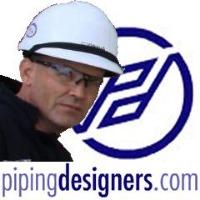High purity terms and definitions Terms and DefinitionsASME/BPE-1997, GR-10 TERMS AND DEFINITIONS
Annealing: a treatment process for steel for the purpose of reducing hardness, improving machinability, facilitating cold working or producing a desired mechanical physical or other property.
Aseptic: free of pathogenic (causing or capable of causing disease) microorganisms.
Aseptic processing: operating in a manner that prevents contamination of the process.
Automatic welding: welding with equipment that performs the welding operation without adjustment of the controls by a welding operator. The equipment may or may not perform the loading and unloading of the work (see machine welding).
Bioprocessing: the creation of a product utilizing living organisms.
Bioprocessing equipment: equipment, systems or facilities used in the creation of products utilizing living organisms.
Cavitation: a condition of liquid flow where, after vaporization of the liquid, the subsequent collapse of vapor bubbles can produce surface damage.
Certification: documented testimony by qualified authorities that a system qualification, calibration, validation or revalidation has been performed appropriately, and that the results are acceptable.
cGMPs: current Good Manufacturing Practices. Current design and operating practices developed by the pharmaceutical industry to meet FDA requirements as published in the Code of Federal Regulations, Chapter 1, Title 21, Parts 210 and 211.
Clean: free of dirt, residues, detergents or any contaminants that may affect or adulterate the product or process.
Clean-in-Place (CIP): internally cleaning a piece of equipment without relocation or disassembly. The equipment is cleaned, but not necessarily sterilized. The cleaning is normally done by acid, caustic or a combination of both, with Water-For-Injection (WFI) rinse.
Clean steam: steam free from boiler additives that may be purified, filtered or separated. Usually used for incidental heating in pharmaceutical applications.
Cloudiness: the appearance of a milky white hue across some portion of a surface resulting from the electropolish process.
Dead leg: an area of entrapment in a vessel or piping run that could lead to contamination of the product.
Demarcation: a localized area that is dissimilar to the surrounding areas with a defined boundary after electropolishing.
Fermentation: the biochemical synthesis of organic compounds by microorganisms or cultivated cells.
Fermentor (fermenter): a vessel for carrying out fermentation.
Full penetration: a weld joint is said to be fully penetrated when the depth of the weld extends from its face into the weld joint so that the joint is fully fused. For a tube-to-tube weld, no unfused portions of the weld joint shall be visible on the inside diameter of a fully penetrated weld.
GMP facility: a facility designed, constructed and operated in accordance with cGMP guidelines established by the FDA.
Heat number: an alphanumeric identification of a stated tonnage of metal obtained from a continuous melting in a furnace.
Hold-up volume: the volume of liquid remaining in a vessel or piping system after it has been allowed to drain.
Hydrotest: a pressure test of piping, pressure vessels or pressure-containing parts, usually performed by pressurizing the internal volume with water at a pressure determined by the applicable code.
Hygienic: of or pertaining to equipment and piping systems that by design, materials of construction and operation provided for the maintenance of cleanliness so that products produced by these systems will not adversely affect human or animal health.
Hygienic clamp joint: a tube outside diameter union consisting of two neutered ferrules having flat faces with a concentric groove and mating gasket that is secured with a clamp, providing a nonprotruding, recessless product contact surface.
Liquid penetrant indication: refer to ASME BPVC, Section V, Article 6, para. T-600, for testing an anomaly or an indication.
Machine welding: welding with equipment that performs the welding operation under the constant observation and control of a welding operator. The equipment may or may not perform the loading and unloading of the works (see automatic welding).
Micron or micrometer (mm): one-millionth of a meter.
Orange peel: an appearance of a pebbly surface.
Passivation: a final treatment/cleaning process used to remove free iron or other anodic contaminants from the surfaces of corrosion-resistant steel parts such that uniform formation of a passive layer is obtained.
Passive layer: a passive oxidized film that forms naturally on the stainless steel surface when exposed to air or similar oxidizing environment protecting the underlying base metal from corrosion.
Pipe: pipe size is determined by diameter and schedule. For bioprocessing equipment, pipe does not include tube.
Pitch: to cause to be set at a particular angle or slope. Degree of slope or elevation.
Porosity: cavity-type discontinuities formed by gas entrapment during solidification.
Pure steam: steam that is produced by a steam generator which, when condensed, meets requirements for Water-For-Injection (WFI).
Pyrogen: a fever-producing substance.
Ra: log of the arithmetic mean of the surface profile. Usually expressed in min as related to roughness (see ASME B46.1).
Self-draining: the elimination of all fluid from the system due to the force of gravity alone.
Square cut: a tube end cut perpendicular to the tangent plane.
Steam-in-Place (SIP): the use of steam to sanitize or sterilize a piece of equipment without the use of an autoclave.
Sterile: free from living organisms.
Surface inclusion: particles of foreign material in a metallic matrix. The particles are usually compounds such as oxides, sulfides or silicates, but may be a substance foreign to and essentially insoluble in the matrix.
Surface residual: a foreign substance that adheres to a surface by chemical reaction, adhesion, adsorption, or ionic bonding. For example, corrosion, rouging and staining.
Tube: tube is sized by its nominal outside diameter. For bioprocessing equipment, tube does not include pipe.
About the Author
{cb:Anton Dooley is a Piper with 30 years experience covering process plant engineering, design & training. He is the founder of pipingdesigners.com} |

